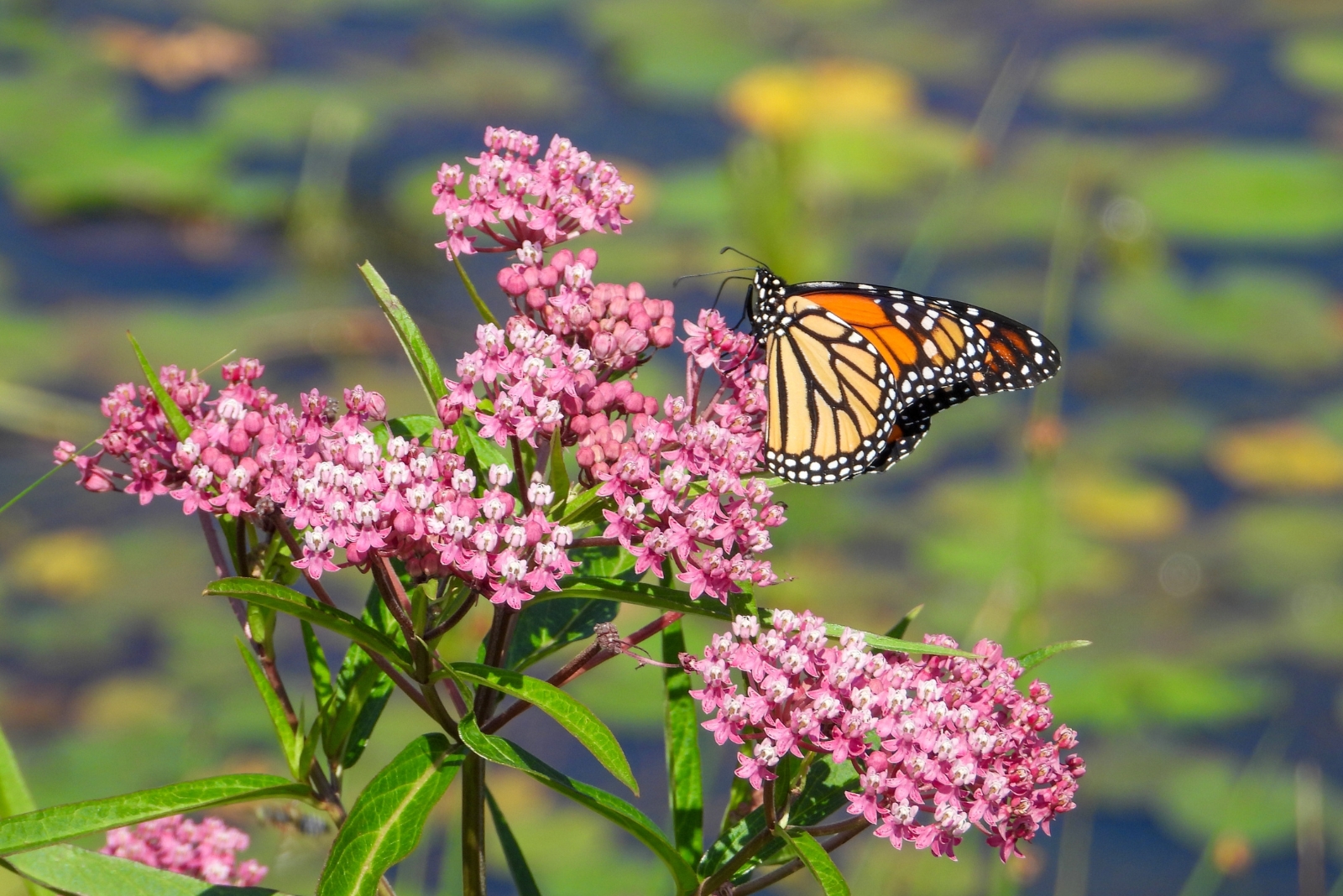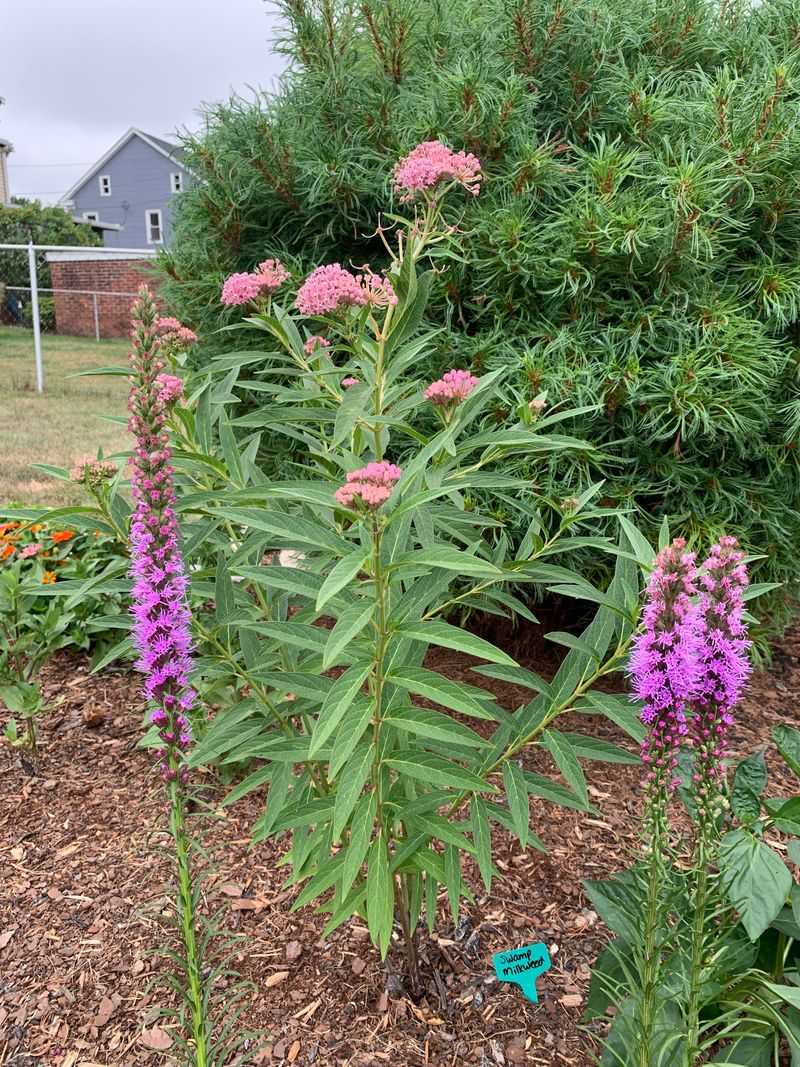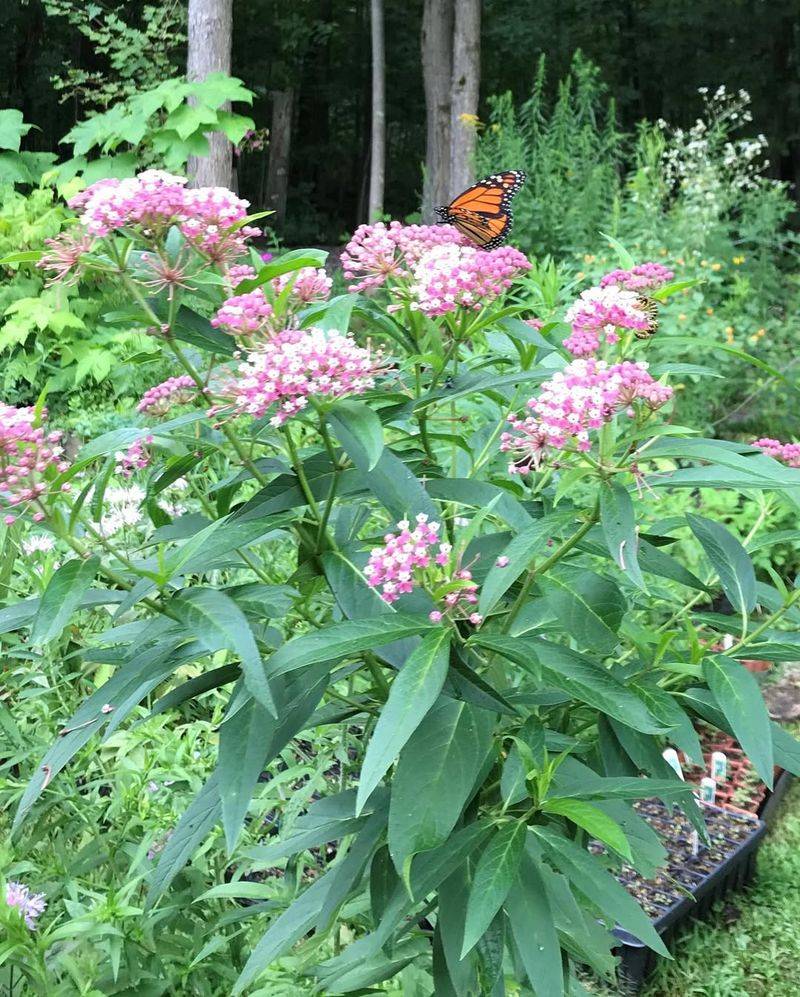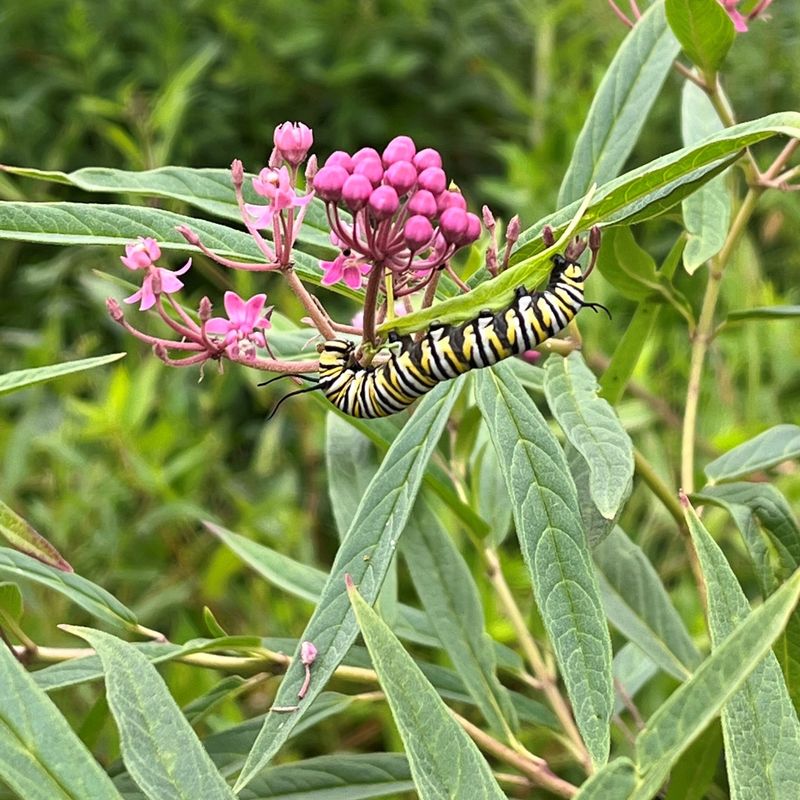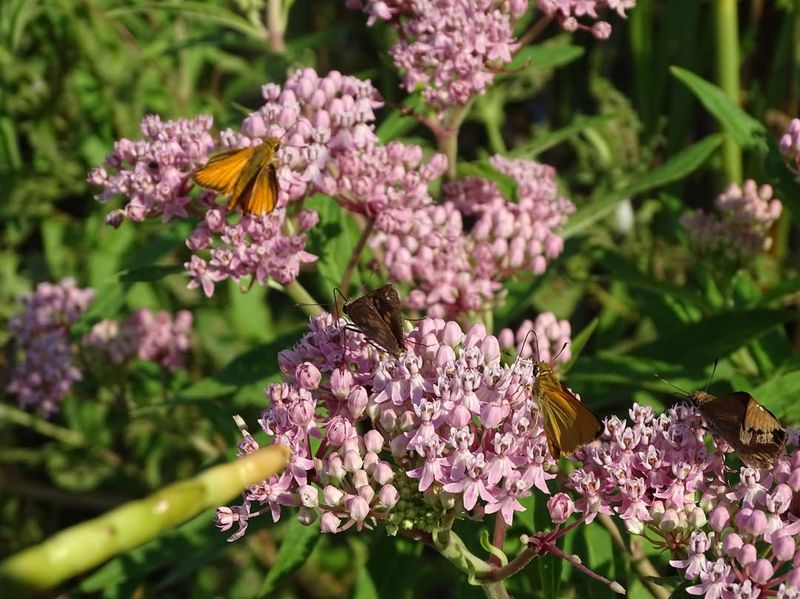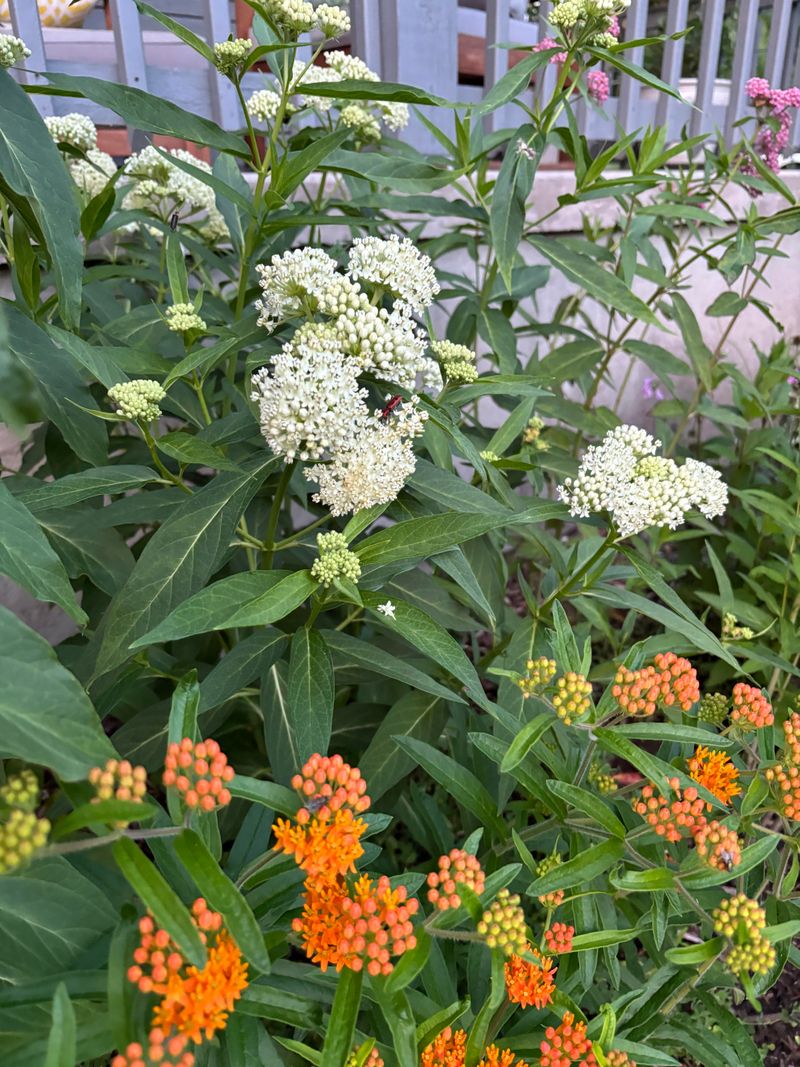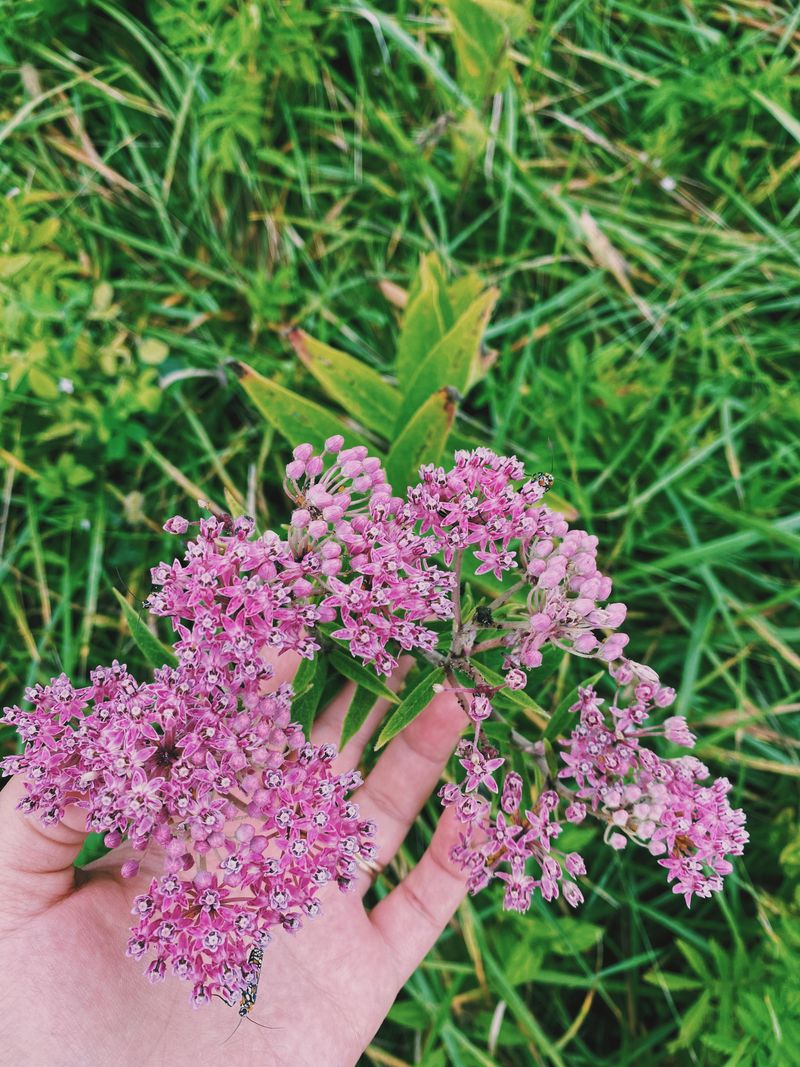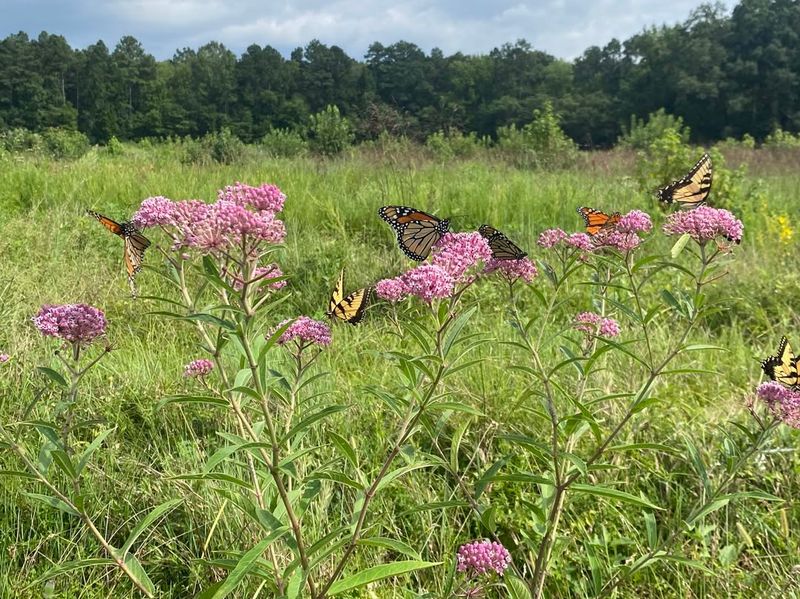If you want butterflies fluttering through your Massachusetts garden this season, there’s one plant they just can’t ignore.
Swamp milkweed is like a magnet for these colorful visitors, turning any patch of greenery into a buzzing paradise.
I planted a few last year, and watching them chase each other from flower to flower never gets old. Trust me, adding this beauty is the easiest way to make your garden feel alive and joyful!
1. Rich Nectar Supply Powers Their Journey
Swamp milkweed produces clusters of fragrant pink flowers packed with sweet nectar that butterflies absolutely crave. Every bloom acts like a tiny fuel station, giving these winged travelers the energy they need for long flights.
Massachusetts butterflies rely on this consistent food source throughout summer and early fall. Unlike many other plants that stop blooming early, swamp milkweed keeps producing fresh flowers when butterflies need them most.
Monarch butterflies especially appreciate the high-quality nectar as they prepare for their incredible migration journey south.
2. Perfect Nursery for Baby Caterpillars
Female monarchs search specifically for milkweed plants to lay their precious eggs because it’s the only food their babies will eat. Swamp milkweed leaves contain everything growing caterpillars need to transform into beautiful butterflies.
Gardens across Massachusetts benefit from hosting these nurseries, creating safe spaces where the next generation can develop. The plant’s sturdy stems and broad leaves provide excellent shelter from wind and rain.
Without milkweed, monarch populations would struggle to survive, making every plant in the state incredibly valuable.
3. Native Plant Thrives in Local Climate
Swamp milkweed evolved right here in Massachusetts and surrounding regions, making it perfectly adapted to local weather patterns and soil conditions. Butterflies instinctively recognize native plants as reliable food sources that have supported their ancestors for thousands of years.
Gardeners find this plant incredibly easy to grow because it naturally handles the state’s humid summers and cold winters. Once established, it requires minimal care while providing maximum benefits to butterfly populations.
Choosing native species creates stronger, healthier ecosystems that support all kinds of wildlife.
4. Blooms Arrive at Migration Peak
Timing is everything when it comes to butterfly survival, and swamp milkweed flowers open exactly when monarchs and other species need them during their Massachusetts stopover. Late summer blooms coincide perfectly with migration periods, offering crucial nourishment before long journeys.
Butterflies traveling through the state depend on finding abundant food sources at just the right moments. Missing these opportunities could mean they don’t have enough energy to complete their trips.
Planting swamp milkweed helps ensure traveling butterflies find the fuel they desperately need.
5. Chemical Defense Protects Butterfly Offspring
Milkweed contains special chemicals called cardenolides that caterpillars absorb while munching on leaves, making them taste terrible to hungry birds and other predators. When caterpillars transform into butterflies, they carry this chemical protection with them throughout their lives.
Massachusetts birds quickly learn that bright orange monarchs make awful meals and leave them alone. Butterflies essentially use swamp milkweed as their personal security system.
Smart survival strategies like this explain why monarchs specifically seek out milkweed plants instead of other options.
6. Fragrance Acts Like a Butterfly Billboard
Walking past swamp milkweed on a warm Massachusetts afternoon, you’ll notice its sweet, pleasant fragrance floating through the air. Butterflies have incredibly sensitive antennae that detect these scent signals from impressive distances away.
Fragrance works like an advertisement, announcing to passing butterflies that a fantastic food source waits nearby. Once one butterfly discovers a patch, others often follow, creating beautiful feeding gatherings.
Gardens with fragrant milkweed become neighborhood hotspots where butterfly watchers can enjoy incredible shows all season long.
7. Wetland Habitat Matches Butterfly Preferences
Butterflies naturally gravitate toward areas with moisture and diverse plant life, which is exactly where swamp milkweed grows best across Massachusetts. Wetland edges, rain gardens, and stream banks create ideal conditions for both the plant and its visiting insects.
Moist soil helps milkweed grow taller and produce more flowers than it would in dry locations. Butterflies benefit from having water sources nearby for drinking while they feed on nectar.
Creating mini wetland gardens at home can attract amazing butterfly diversity throughout the growing season.

